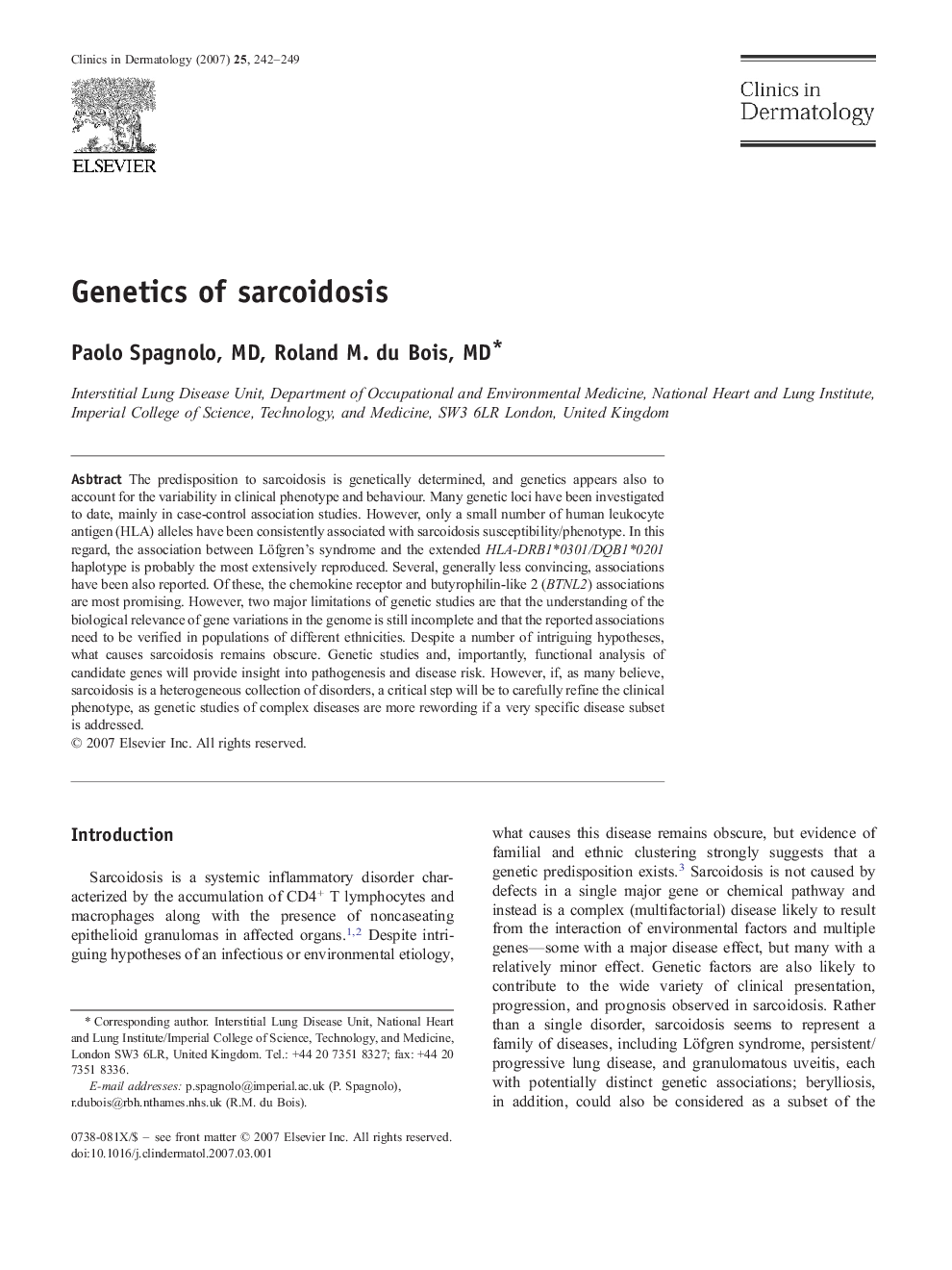| Article ID | Journal | Published Year | Pages | File Type |
|---|---|---|---|---|
| 3195240 | Clinics in Dermatology | 2007 | 8 Pages |
AsbtractThe predisposition to sarcoidosis is genetically determined, and genetics appears also to account for the variability in clinical phenotype and behaviour. Many genetic loci have been investigated to date, mainly in case-control association studies. However, only a small number of human leukocyte antigen (HLA) alleles have been consistently associated with sarcoidosis susceptibility/phenotype. In this regard, the association between Löfgren's syndrome and the extended HLA-DRB1*0301/DQB1*0201 haplotype is probably the most extensively reproduced. Several, generally less convincing, associations have been also reported. Of these, the chemokine receptor and butyrophilin-like 2 (BTNL2) associations are most promising. However, two major limitations of genetic studies are that the understanding of the biological relevance of gene variations in the genome is still incomplete and that the reported associations need to be verified in populations of different ethnicities. Despite a number of intriguing hypotheses, what causes sarcoidosis remains obscure. Genetic studies and, importantly, functional analysis of candidate genes will provide insight into pathogenesis and disease risk. However, if, as many believe, sarcoidosis is a heterogeneous collection of disorders, a critical step will be to carefully refine the clinical phenotype, as genetic studies of complex diseases are more rewording if a very specific disease subset is addressed.
